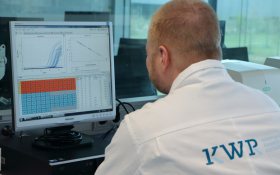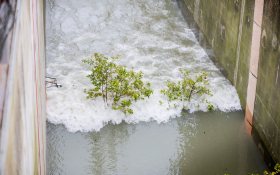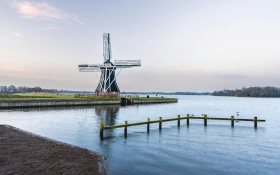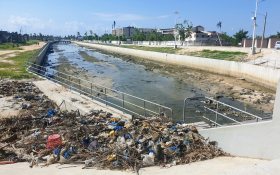Dutch risk reduction team assessed extreme drought situation in northwest Costa Rica
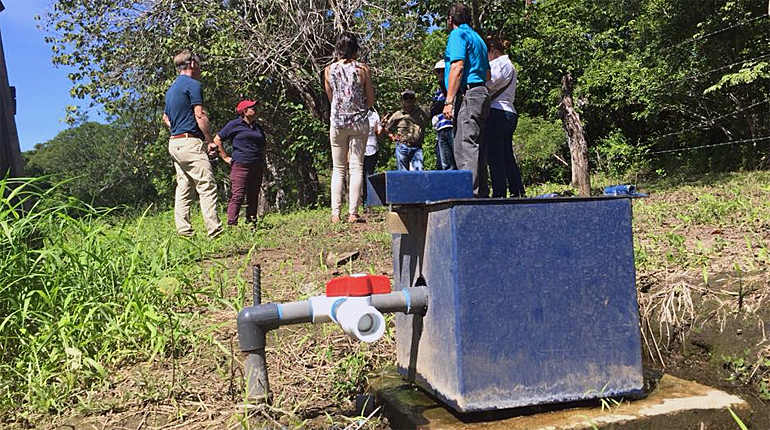
At the invitation of the Costa Rica government a Dutch risk reduction team (DRR-Team) visited the province of Guanacaste to assess the serious drought that affects the region.
The initial scoping mission took place late November. Two Dutch experts, Klaas de Groot (Arcadis) and Patricia Trambauer (Deltares) looked at potential measures to reduce drought risks.
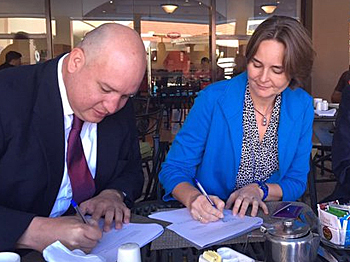 Director of the Comisión Nacional de Prevención de Riesgos y Atención de Emergencias (CNE), Dr. Iván Brenes (left), and Dutch ambassador in Costa Rica, Mette Gonggrijp, formalise the visit of the DRR-Team.
Director of the Comisión Nacional de Prevención de Riesgos y Atención de Emergencias (CNE), Dr. Iván Brenes (left), and Dutch ambassador in Costa Rica, Mette Gonggrijp, formalise the visit of the DRR-Team.
Extreme weather events related to El Nino
Last year the province of Guanacaste in the northwest of Costa Rica faced the worst drought in 50 years. The rainfall dropped 60 percent below average in August.
Costa Rica is suffering from two climate related disasters at the same time: flooding at the Atlantic Coast and drought in the central area and on the Pacific Coast due to the consequences of El Nino.
Both have the status of national emergency and are coordinated by the National Commission on risk prevention & emergency response (CNE) that falls directly under the Office of the President.
Field trip to meet farmers
The DDR-Team made a fieldtrip to meet several authorities, private sector, development banks and the national university.
The team also had the opportunity to talk to farmers, ranchers and owners of the water users company Sociedad de Usuarios de Agua del Oeste de Cañas Dulces.
They use the water to grow watermelon and beans. The farmers constructed reservoirs and already apply drip irrigation.
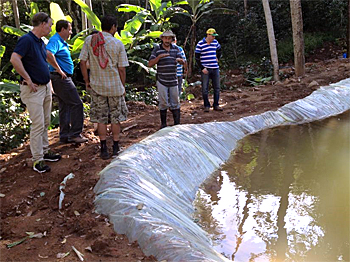 Proposed measures
Proposed measures
During the mission some immediate measures were proposed, as well as midterm and long term measures were identified.
Immediate measures related to the increase of water availability, such as the construction legal wells. The other option is to decrease the water demand by using the water more efficient. One of the recommendations included the prioritization and minimization of certain water use.
Long term measures that were discussed focused on risk reduction, including aquifer recovery, desalination, re-use of treated waste water, governance, master planning and early warning systems.
CNE will evaluate these ideas and where possible include these initiatives in the emergency program that will be carried out over the coming five years.
A second mission will take place early next year and will focus on flood risk management.
About DRR-Team facility
The Dutch government initiated the Dutch Risk Reduction Team in 2014 to meet the demand from other governments for advise on urgent water risks such as flooding.
At the invitation of a local government a DRR-Team visits a country and advises on how to resolve urgent water issues related to flood risks, water pollution and water supply, to prevent disasters or to rebuild after water related disasters.
Formal requests for the DRR-team are handled through the local Dutch embassies.
This news item was originally published on the websites of CNE (in Spanish only) and the Dutch risk reduction team.
Read also on this website
● Dutch expert team starts work on coastal protection strategy for cities of Tacloban and Palo, Philippines. 16 November 2015
● DRR-team surprised by quick repaired levees after extreme floods in Myanmar, 10 September 2015
● WCDRR 2015: Dutch flood expertise appreciated in Serbia, 19 March 2015
● Dutch experts assess flood risk reduction options for devastated Tacloban city, the Philippines, 16 July 2014
● First callout for DRR-team by Mexican government to assist in flood reduction effort, 7 March 2014
More information
Dutch Risk Reduction Team
www.dutchwatersector.com/drr
